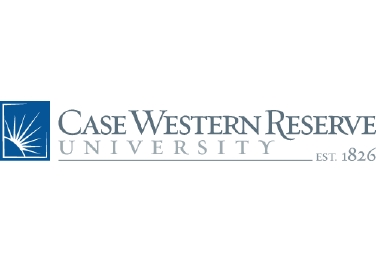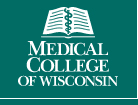A Trial of Percutaneous vs. Endoscopic Drainage of Suspected Klatskin Tumors
| Status: | Recruiting |
|---|---|
| Conditions: | Liver Cancer, Cancer, Lymphoma |
| Therapuetic Areas: | Oncology |
| Healthy: | No |
| Age Range: | 40 - Any |
| Updated: | 4/17/2018 |
| Start Date: | August 20, 2017 |
| End Date: | April 2020 |
| Contact: | B. Joseph Elmunzer |
| Email: | elmunzer@musc.edu |
| Phone: | 843 876 4261 |
A Multicenter Randomized Trial of Percutaneous Transhepatic Biliary Drainage vs. Endoscopic Retrograde Cholangiography for Decompression of Suspected Malignant Biliary Hilar Obstruction - the INTERCPT Trial
The optimal approach to the drainage of malignant obstruction at the biliary hilum remains
uncertain. This is a randomized comparative effectiveness study of percutaneous transhepatic
biliary drainage (PTBD) vs. endoscopic retrograde cholangiography (ERC) as the first
intervention in patients with cholestasis due to suspected malignant hilar obstruction.
uncertain. This is a randomized comparative effectiveness study of percutaneous transhepatic
biliary drainage (PTBD) vs. endoscopic retrograde cholangiography (ERC) as the first
intervention in patients with cholestasis due to suspected malignant hilar obstruction.
Both percutaneous transhepatic biliary drainage (PTBD) and endoscopic retrograde
cholangiography (ERC) are accepted approaches in the management of patients with malignant
obstruction at the biliary hilum. In routine clinical practice, ERC is generally favored on
the basis of: 1) high technical and clinical success rates for other (non-hilar) indications;
2) the perceived safety of ERC relative to PTBD; 3) the perceived ability to perform more
comprehensive tissue sampling at the time of ERC compared to PTBD; 4) the avoidance of
external tubes which are often needed for PTBD; and 5) because patients with suspected
malignant hilar obstruction (MHO) typically present to and are managed by
gastroenterologists. However: 1) observational data suggest that PTBD is superior for
achieving complete drainage of MHO1 and some guidelines recommend the percutaneous approach
over ERC for Bismuth type 3 & 4 hilar strictures; 2) the generally quoted risks of PTBD are
based on outdated studies and may be exaggerated; and 3) endoscopic diagnosis of
indeterminate biliary strictures remains suboptimal despite the use of cholangioscopy and
multi-modal sampling.
Although many patients who undergo initial ERC require subsequent PTBD for adequate drainage,
no randomized trials comparing the two modalities for suspected MHO have been published. The
main hypothesis is that even though PTBD will be more effective than ERC for decompression of
suspected MHO, this advantage will be offset by the favorable safety profile and superior
diagnostic capability of ERC. If, however, PTBD is found to be substantially superior (by a
pre-specified margin) in terms of drainage, or if the potential advantages of ERC are not
realized, then the existing clinical approach to MHO must be reappraised. Moreover,
identifying patient and stricture characteristics that predict response to PTBD or ERC may be
important for informing clinical decision-making and guidelines.
cholangiography (ERC) are accepted approaches in the management of patients with malignant
obstruction at the biliary hilum. In routine clinical practice, ERC is generally favored on
the basis of: 1) high technical and clinical success rates for other (non-hilar) indications;
2) the perceived safety of ERC relative to PTBD; 3) the perceived ability to perform more
comprehensive tissue sampling at the time of ERC compared to PTBD; 4) the avoidance of
external tubes which are often needed for PTBD; and 5) because patients with suspected
malignant hilar obstruction (MHO) typically present to and are managed by
gastroenterologists. However: 1) observational data suggest that PTBD is superior for
achieving complete drainage of MHO1 and some guidelines recommend the percutaneous approach
over ERC for Bismuth type 3 & 4 hilar strictures; 2) the generally quoted risks of PTBD are
based on outdated studies and may be exaggerated; and 3) endoscopic diagnosis of
indeterminate biliary strictures remains suboptimal despite the use of cholangioscopy and
multi-modal sampling.
Although many patients who undergo initial ERC require subsequent PTBD for adequate drainage,
no randomized trials comparing the two modalities for suspected MHO have been published. The
main hypothesis is that even though PTBD will be more effective than ERC for decompression of
suspected MHO, this advantage will be offset by the favorable safety profile and superior
diagnostic capability of ERC. If, however, PTBD is found to be substantially superior (by a
pre-specified margin) in terms of drainage, or if the potential advantages of ERC are not
realized, then the existing clinical approach to MHO must be reappraised. Moreover,
identifying patient and stricture characteristics that predict response to PTBD or ERC may be
important for informing clinical decision-making and guidelines.
Inclusion Criteria:
1. Age ≥40 (to reduce the likelihood of enrolling patients with obstruction due to
primary sclerosing cholangitis)
2. Cholestatic liver function tests, including serum alkaline phosphatase level ≥ 300
IU/L and bilirubin level ≥ 3.7 mg/dL
3. Radiographic evidence of a biliary hilar stricture OR intrahepatic but no extrahepatic
biliary ductal dilation
Exclusion Criteria:
1. Known radiographic evidence of a Bismuth-Corlette type 1 biliary stricture
2. Known diagnosis of primary sclerosing cholangitis without suspicion of dominant hilar
stricture
3. Recent gallbladder/biliary surgery within 12 months
4. Known Mirizzi syndrome
5. Known IgG4-mediated cholangiopathy
6. Significant liver metastatic disease interfering with safe/effective PTBD
7. Significant ascites interfering with safe/effective PTBD
8. Known regional malignant-appearing adenopathy or extra-biliary mass, indicating the
need for concurrent EUS-FNA
9. Prior ERCP or PTBD for hilar obstruction
10. Surgically altered luminal anatomy other than prior Billroth reconstruction or Whipple
resection
11. Standard general contraindications to ERCP or PTBD (e.g. hemodynamic instability,
uncorrected coagulopathy, etc.)
12. Inability or unwillingness to follow study protocol
We found this trial at
25
sites
Case Western Reserve Univ Continually ranked among America's best colleges, Case Western Reserve University has...
Click here to add this to my saved trials
Emory University Emory University, recognized internationally for its outstanding liberal artscolleges, graduate and professional schools,...
Click here to add this to my saved trials
Johns Hopkins University The Johns Hopkins University opened in 1876, with the inauguration of its...
Click here to add this to my saved trials
University of Florida The University of Florida (UF) is a major, public, comprehensive, land-grant, research...
Click here to add this to my saved trials
Click here to add this to my saved trials
University of Southern California The University of Southern California is one of the world’s leading...
Click here to add this to my saved trials
Cedars Sinai Med Ctr Cedars-Sinai is known for providing the highest quality patient care. Our...
Click here to add this to my saved trials
University of Michigan The University of Michigan was founded in 1817 as one of the...
Click here to add this to my saved trials
Boston University Boston University is no small operation . With over 33,000 undergraduate and graduate...
Click here to add this to my saved trials
171 Ashley Avenue
Charleston, South Carolina 29425
Charleston, South Carolina 29425
843-792-1414

Medical University of South Carolina The Medical University of South Carolina (MUSC) has grown from...
Click here to add this to my saved trials
University of Virginia The University of Virginia is distinctive among institutions of higher education. Founded...
Click here to add this to my saved trials
Click here to add this to my saved trials
Ohio State University The Ohio State University’s main Columbus campus is one of America’s largest...
Click here to add this to my saved trials
Click here to add this to my saved trials
Click here to add this to my saved trials
Click here to add this to my saved trials
Medical College of Wisconsin The Medical College (MCW) of Wisconsin is a major national research...
Click here to add this to my saved trials
Vanderbilt University Vanderbilt offers undergraduate programs in the liberal arts and sciences, engineering, music, education...
Click here to add this to my saved trials
Yale University Yale's roots can be traced back to the 1640s, when colonial clergymen led...
Click here to add this to my saved trials
Click here to add this to my saved trials
Virginia Commonwealth University Since our founding as a medical school in 1838, Virginia Commonwealth University...
Click here to add this to my saved trials
Click here to add this to my saved trials
Click here to add this to my saved trials
Click here to add this to my saved trials
Sibley Memorial Hospital Sibley Memorial Hospital, in Northwest Washington, D.C., has a distinguished history of...
Click here to add this to my saved trials














